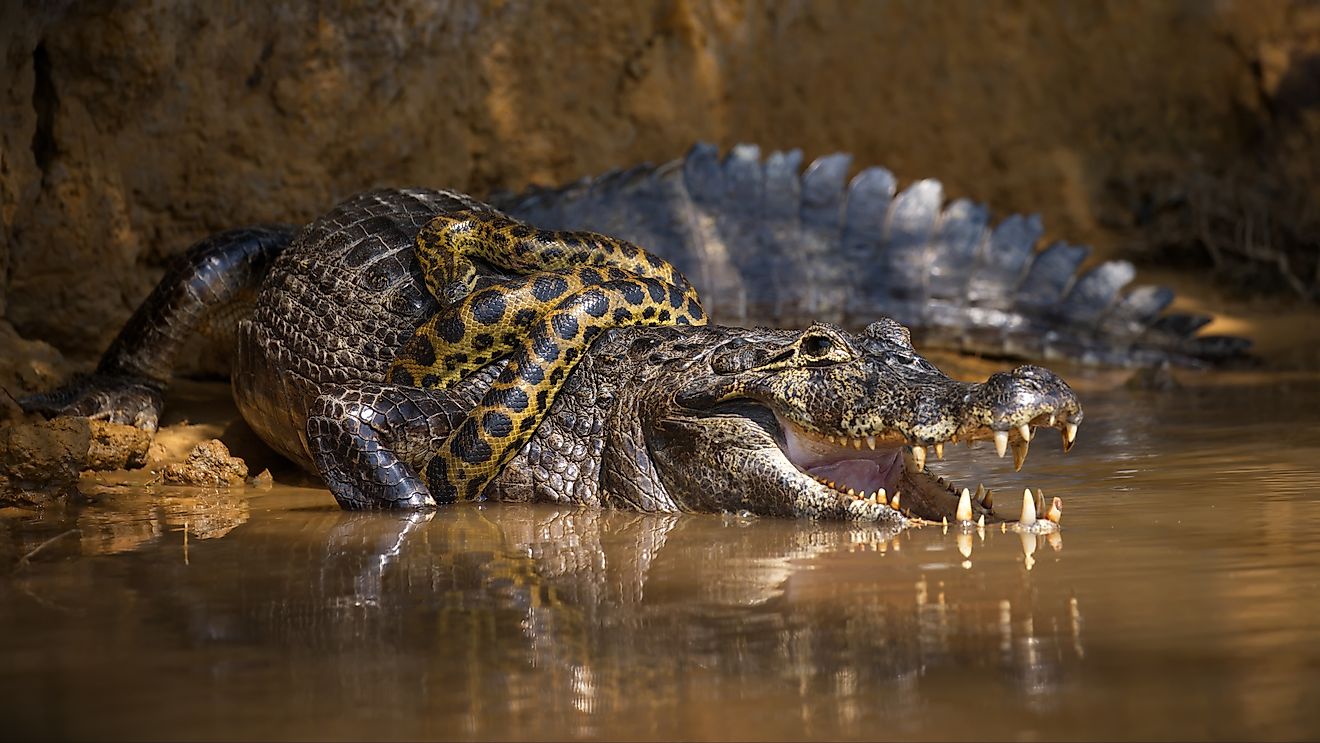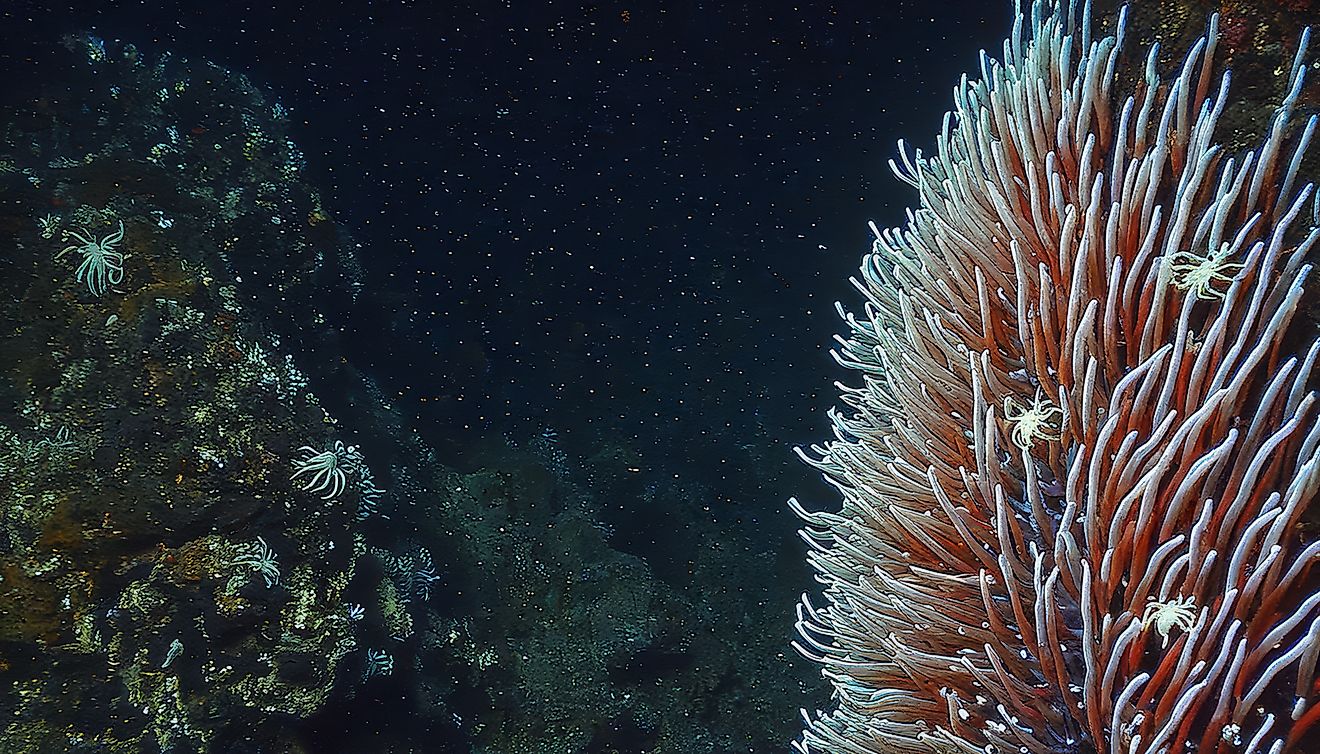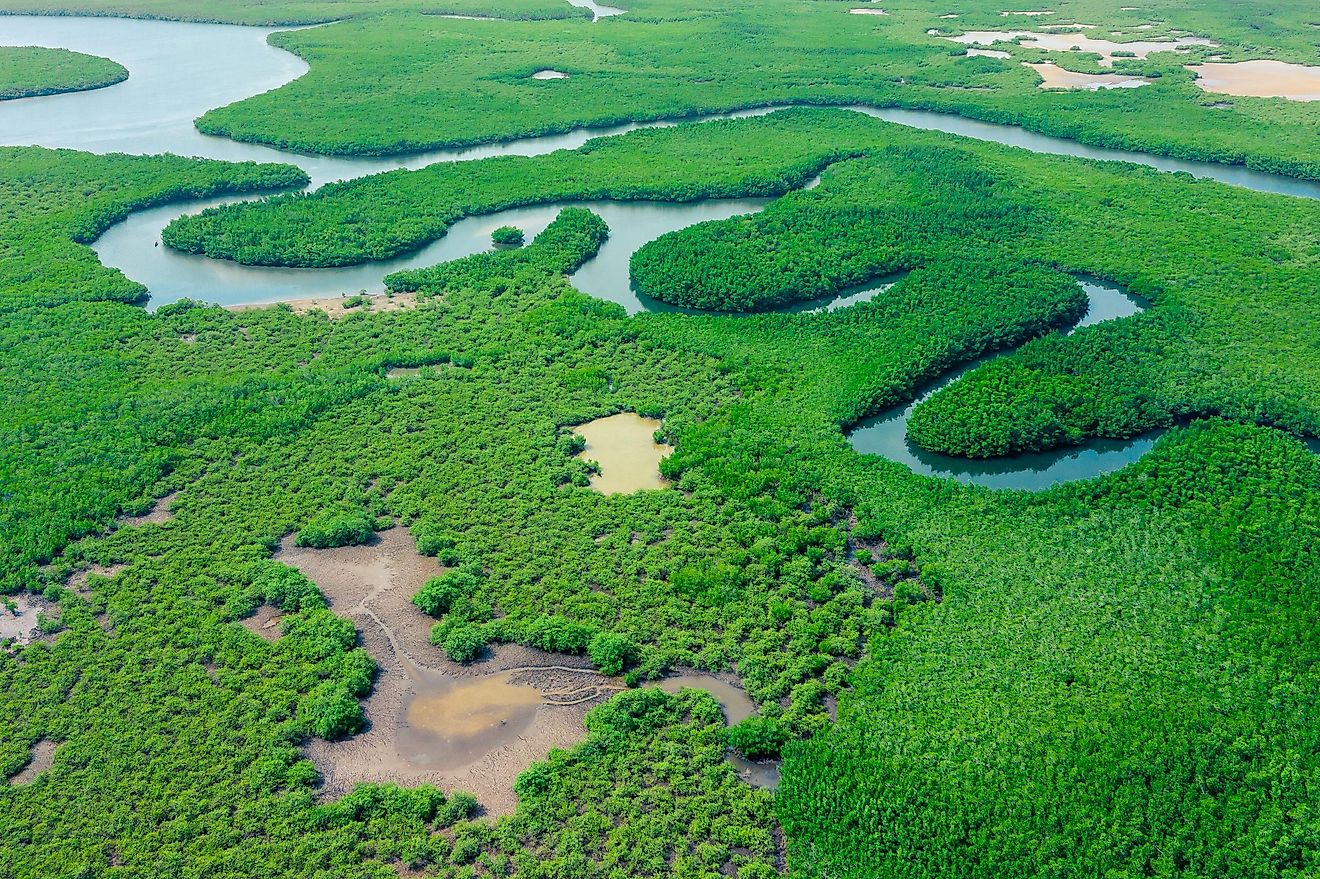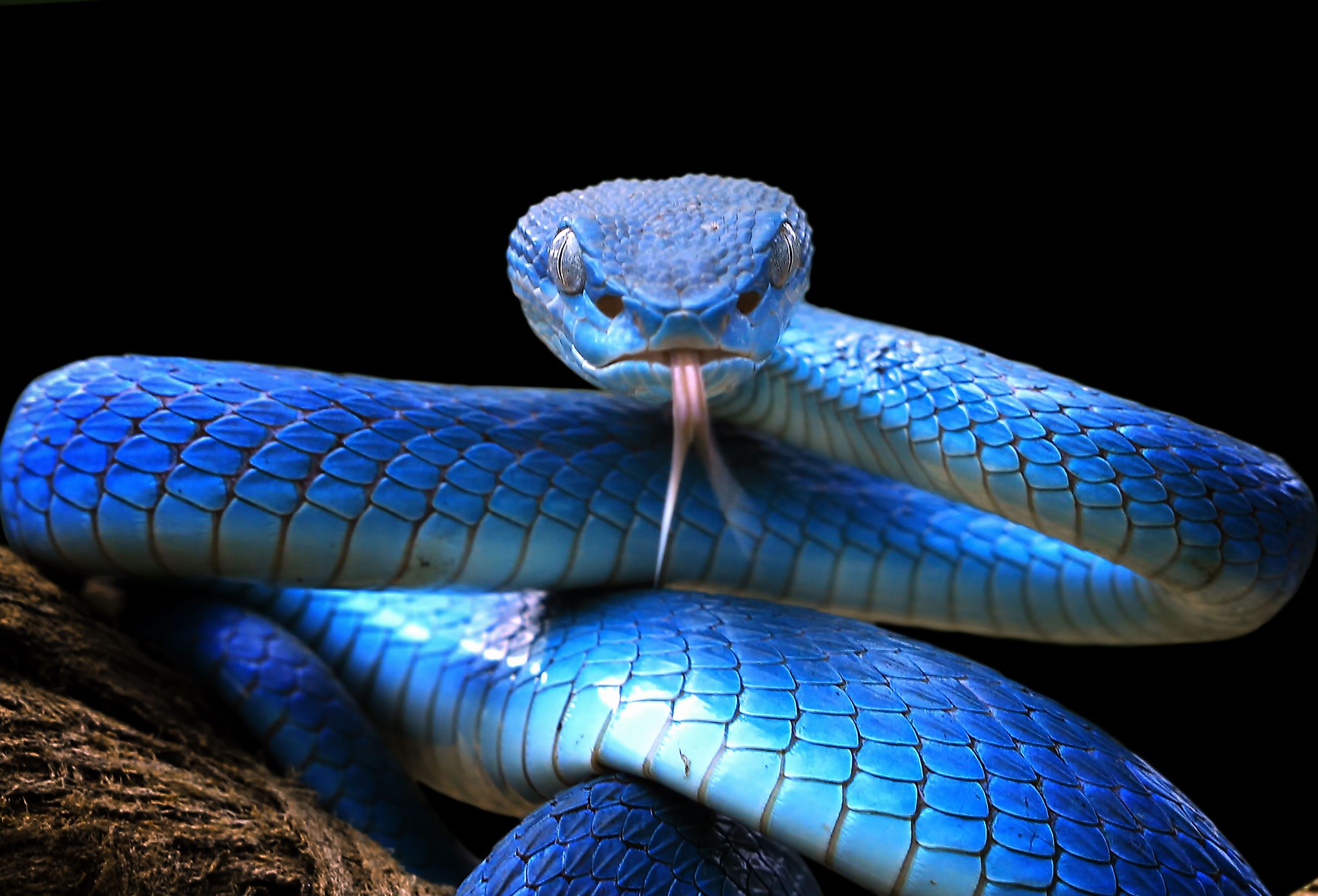
Snake
While many people may scream at even the notion of snakes, and others have a delighted fascination with the creatures, snakes can teach us so much more than what is seen on television or at the zoo. The oldest fossil snake discovered has been from the early Cretaceous Period, just a few years after the end of the Jurassic Period. Over 2,600 types of snakes have been documented throughout the world. Snakes have been at the heart of many religious philosophies; snakes can be metaphors for evil and temptation or a representation of the sacred life force that sustains us all. Whether folks are afraid of them or scientifically enthralled by them, snakes have long held a fascination for mankind.
Range and Habitat of Snakes:
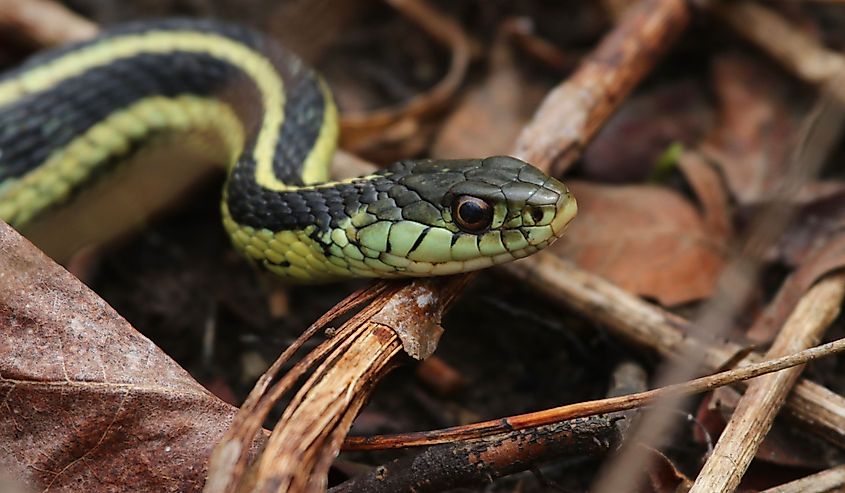
There are few corners of the earth where snakes have not been documented in some form or another, such as the passive garter snakes in gardens of North America or the massive and deadly boa constrictor and python snakes of Africa and Asia. On the Malay Peninsula alone, comprising the territories of The Federation of Malaya and Singapore Island, 127 species of snakes have been recorded. Snakes of various species can live on land or in water, which makes it easy for them to find habitats in most areas of the globe. Not to mention, some people care for snakes as pets, although this is perhaps more of a North American trend. There are a few islands that have never been native hosts to snakes: Ireland and New Zealand. The only whole continent with zero snakes is Antarctica as it is too cold for their blood system.
Snake Subspecies:
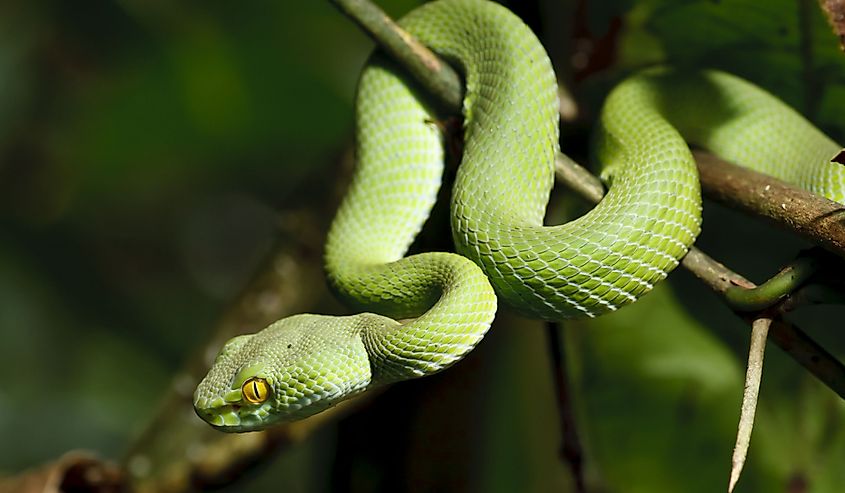
According to the now-outdated Snake Species of the World series (though it may have been updated since first published), there exists more than 31 families, 450 genera, and over 2,500 species of snakes currently living in the world. Snakes, or “Serpents” (Ophidia) are a sub-order of the Reptile class (Reptilia) in the Animal Kingdom. Along with the sub-order Lizards, they fall under the order Squamata. Genera are groups of closely related species, but some snake species are so individual that they have a genus to themselves. Sub-species are snakes in one species that have slightly different body formations or different behaviors.
Homalopsid snakes, for example, are aquatic with rear fangs and inhabit freshwater, brackish water, and marine waters, favoring muddy areas where silt from the Himalayas flows into Southeast Asian seas. These areas are generally found in eastern waters from Pakistan to Australia. Homalopsid snakes tend to feed on fish and crustaceans. The tropical island of Thailand, covered in jungle and aquatic habitats, is also home to a variety of snakes–including over 115 individual species and subspecies. There are eight families of snakes home to the Malay Peninsula, such as the burrowing Typhlopidae and the poisonous, front-fanged Elapidae (whose family includes Cobras, among other species). The Colubridae family of snakes is known for their abilities in swimming, climbing, and burrowing. Needless to say, there is no escaping these determined creatures! However, only some of these species of snakes are poisonous. The majority of known snake species' belong to the Colubridae family.
Food Habits of Snakes:
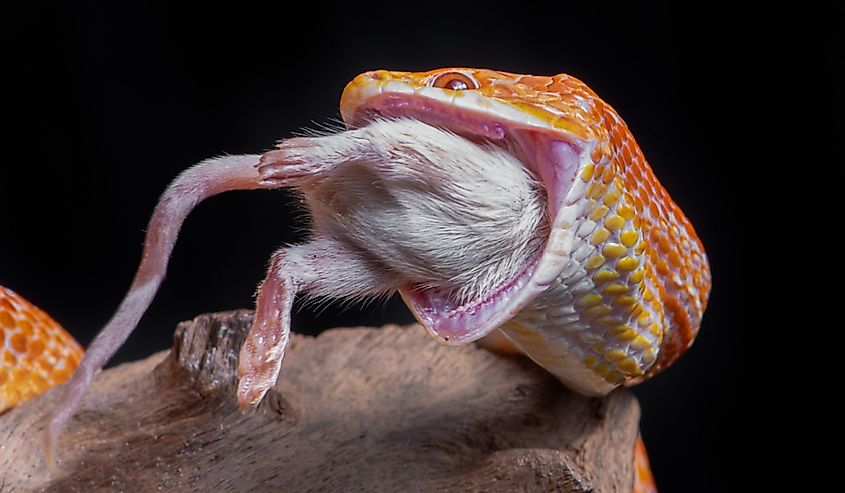
Different snakes of different sizes eat different sizes of prey, however, all snakes are carnivorous, meaning they do not consume plants. Garter snakes tend to eat rodents, amphibians, and smaller reptiles. Corn snakes tend to feed on rats and rodents, as well as steal eggs to eat from chicken coops. Some snakes even eat other snakes. Kingsnakes do not have venom, but they do eat venomous species of snakes, which makes them superb pest controllers. Smaller snakes, like the Ringneck or grass snakes, cannot eat rodents, so they feast on amphibians, earthworms, and insects. Water snakes will also eat fish. Larger snakes such as Hognose snakes and rattlesnakes have adapted to eat mainly mammals. Baby snakes tend to eat what their parents do but in smaller portions. Domesticated snakes typically cannot handle live rodents and should instead be fed already dead creatures, usually frozen rodents, that fit their specific type of diet. Snakes swallow their prey whole, so their diet will be fully nutritional even if they only eat mice (or perhaps rabbits, for larger snakes like pythons). The largest wild snakes can feed on medium-sized mammals like antelope or other reptiles like alligators. Generally, humans are not on a snake's diet, however, snakes might eat anything available, and there are some reports where this has occurred.
Behavior and Reproduction:
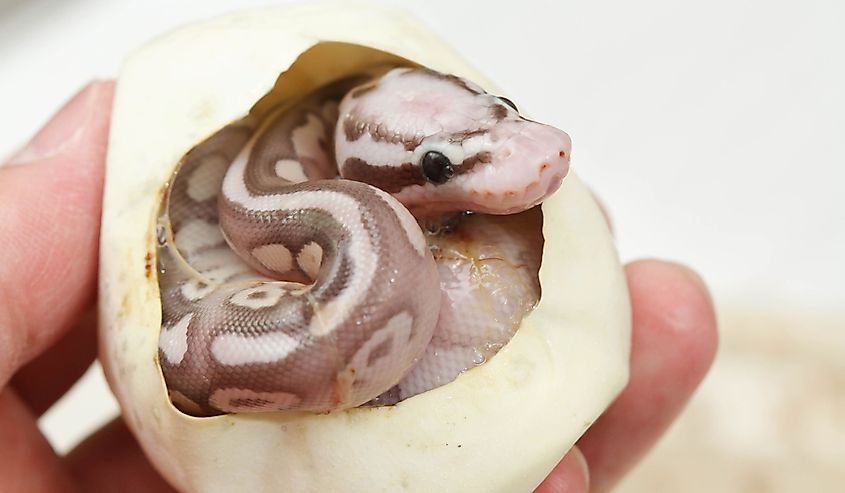
As predators, snakes have an acute sense of hearing to hunt their prey, however, snakes hear differently than humans do. In essence, they are extremely sensitive to vibrations in the ground and air. Snakes who hunt in the daytime have a superior sense of sight and some even have larger eyes to accomplish this. Snakes usually have eyes with round pupils, but some that hunt at night have adapted the ability to contract the pupil into a narrowed slit to improve nighttime vision. All snakes have a transparent scale covering their eyes, like an immovable eyelid similar to a contact lens. While it is reforming between skin shedding and regrowth, the snake is blind. Also, snakes smell through their tongue–just as in humans scent and taste are associated–but they do have a separate olfactory membrane. Certain species of snake are also able to sense heat to a small degree with some of their organs.
Snakes have just four main movements. Sidewinding is when a snake thrusts its head violently to one side and forward which forces the rest of the body to follow, and repeats this in the other direction. The well-known maneuver entitled “Serpentine” is about when snakes stay in a constant side-to-side motion to keep propelling their bodies forward. Some snakes pull their bodies into a bent shape and then straighten out to move forward, which is called Concertina. Another motion is in mimicry of caterpillars, how they contract and expand their bodies to inch forward slowly.
The largest family grouping of snakes uses moves like sliding the chin along the body, coiling one body around the other, jerking the head, biting, and tail vibration for copulation, which leads to reproduction. Some of these derive from more recent snake generations, but either way, they might appear to humans like dance moves. Most species of snakes also use a mounted position for reproduction, but it is not necessary for the creation of baby snakes. For this, snakes only need to align the base of their tails at the opening which serves as both a reproductive system and excretory system. The male extends a two-pronged sex organ from the tail and deposits sperm into the female's cloaca (the reproductive and excretory opening).
Evolution of Snakes:
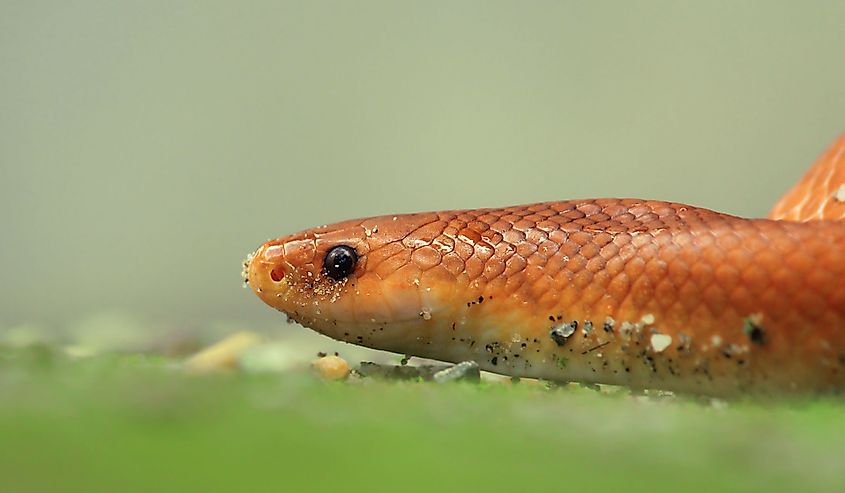
Snakes have bones and cartilage to connect them and allow muscles to attach properly, despite rumors otherwise. Significant adaptations of snakes include a protective bony investment of the forebrain and the way their jaws can open to swallow prey whole, involving a lower jaw bone that can dislocate while staying connected through flexible ligaments. Despite losing certain limbs, which is shown by how some snakes (Anilidae, Pythons, and more) retain hip and leg bones without the actual appendages, snakes are the sole vertebrates that have not struggled to adapt due to this loss over generations. They have a supple skeletal structure that allows for easy movement, which helps them move forwards, capture prey, and reproduce. Snakes have more bones than most animals, numbering around 300-400. In venomous snakes, the fangs are hollow but are not made of bone. Snakes' fangs can take on different shapes, sizes, and textures.
As with any bone structure, snakes' bones can break and can result in paralysis, loss of movement, and death, especially if they become unable to hunt or feed due to paralysis or loss of movement. Ways to tell if a snake has a broken bone is if it cannot seem to move one half of its body, the snake avoids the use of part of its body, or the snake has an unusual lump or depression. Small snakes have rib bones that are easily broken by crushing or dropping. Tree-climbing snakes have developed slender bodies with a keel bone that assists in the act of climbing, while others have developed the ability to launch themselves from a higher branch to a lower one in the same gliding style as flying squirrels. Certain aquatic snakes have developed nostrils on top of the nose or snout to make breathing at the water surface easier.
Ecological and Scientific Significance of Snakes:
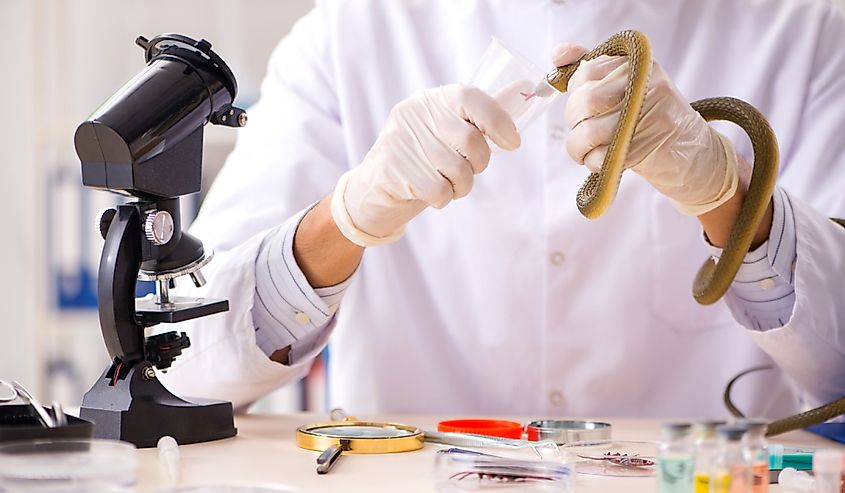
Rodents often are the carriers for ticks and other disease-infested creatures, like fleas. Snakes help manage the rodent population, which in turn means that they help both with pest control and disease prevention. The natural reduction of pests in human environments is better for the environment as a whole because we spray fewer chemicals to get rid of such pests and prevent ourselves from obtaining such diseases. Other than rodent control, snakes play a big part in balancing the ecosystems they are native to, as they are both predator and prey to birds like hawks and larger animals who are powerful enough to hunt them.
Scientists also find snakes useful in their studies of medicine and biotechnology. Venoms have been studied for their medical properties since the late 1800s. Different venoms have had different uses over generations and as snakes have evolved, more individual traits have emerged. Therefore, venom strengths and types vary, some may be more fatal than others, others more paralytic. Snake venom has also been used to create immunization protocols for specific antibodies. Henry Sewall first showed that pigeons could be immunized against a type of rattlesnake venom through multiple shots of the venom over time. Albert Calmette showed that an antidote serum taken from vaccinated rabbits would protect against the effects of venom when healthy rabbits were inoculated (and then subjected to the same venom in a natural way). By the mid-1900s, antivenom production was nearly commonplace in countries including the USA, Brazil, Australia, and Japan.
Threats to Snakes:
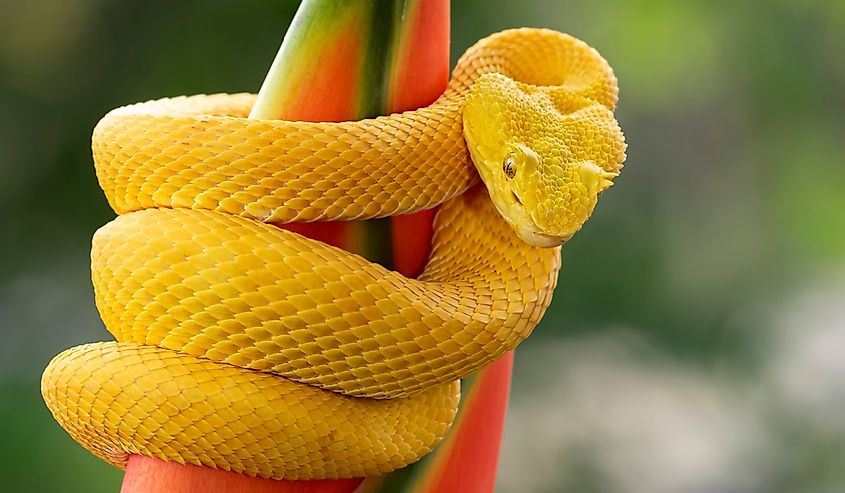
Snakes have become endangered for a variety of reasons, not least of which are human fear and persecution. Urban development of locations snakes inhabit – and thereby habitat destruction – is another major concern. Many invasive species have also been introduced into native snake habitats, which endangers them as our ecosystem is not used to the new species. A few species are even entirely extinct in the wild, such as Typhlops cariei. Vipera orlovi are on the critically endangered list and their population size is decreasing. At least a hundred snakes are on the endangered list and even more are considered vulnerable and near threatened. Since snakes are so important to a variety of ecosystems and scientific studies, it behooves us to take better care of the wild species of snakes that still live in the world.
Conclusion:
Now that you know more about these saucy, slithering, reptilian creatures, what will you do with the information? How can you protect snakes naturally in the habitats at home or discover more scientific uses for venom and snake bones or skin – especially since they shed their skin while still alive? There are many other endangered animals out there for you to learn about! Bats are especially having a hard time right now, with the widespread White Nose Syndrome. Read about the animals of the Amazon Rainforest or which animals have been domesticated. Use your newfound knowledge to help improve the world around you.

